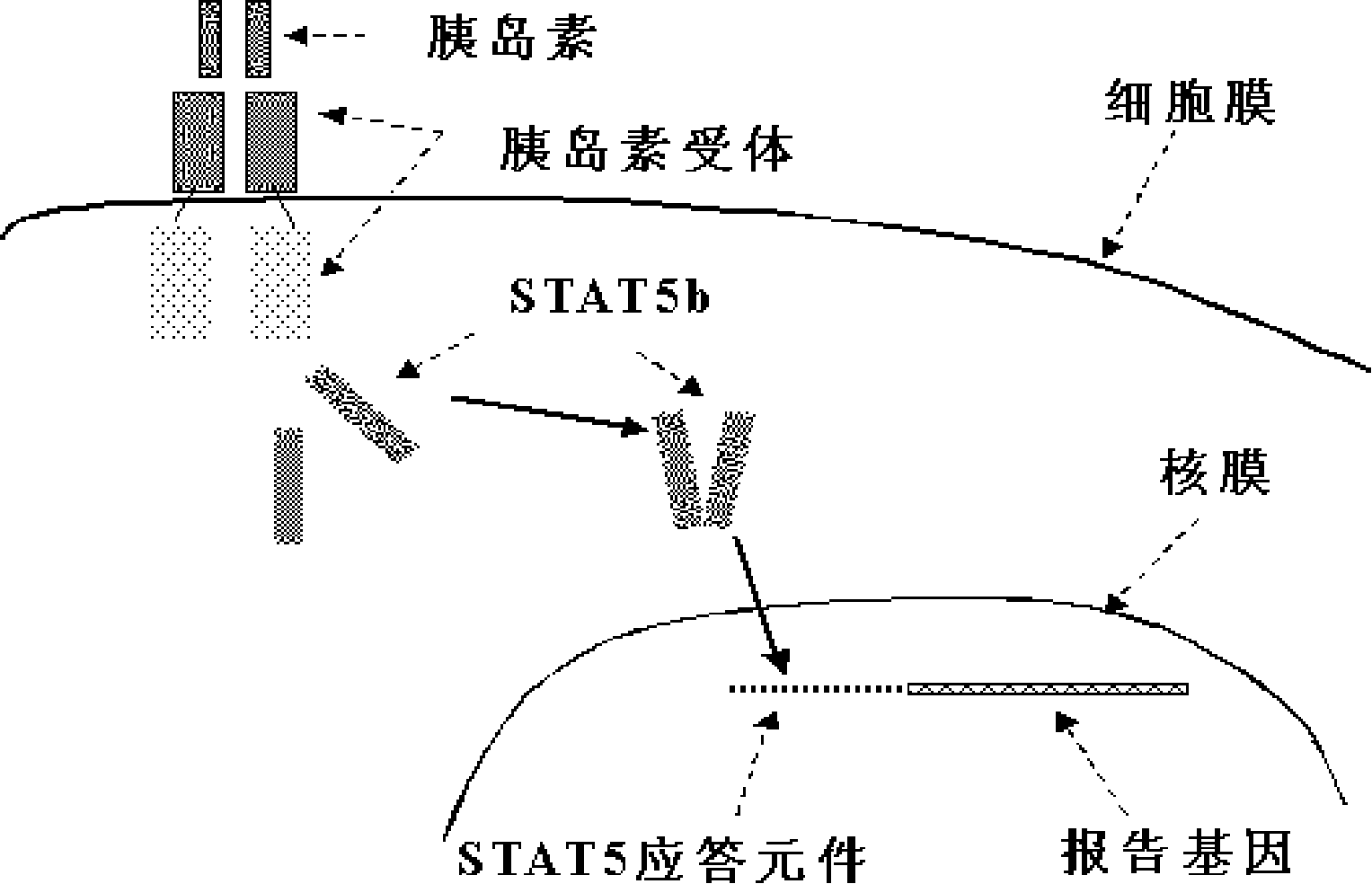Cell model for sifting anti-diabetic drugs
A cell model and anti-diabetic technology, applied in the field of genetic engineering, can solve the problems of cumbersome operation, high cost, and difficulty in high-throughput screening, and achieve the effects of high accuracy, low cost, and simple and controllable preparation methods
- Summary
- Abstract
- Description
- Claims
- Application Information
AI Technical Summary
Problems solved by technology
Method used
Image
Examples
Embodiment 1
[0043] The selection of embodiment one insulin receptor (IR) gene expression vector
[0044] IR is a transmembrane receptor located on the cell membrane and is an important signaling pathway. Mutations in structural genes or during expression can lead to insulin resistance, leading to the occurrence of type II diabetes. IR is a heterotetrameric protein that is widely distributed in the cell membranes of various tissues throughout the body. Each cell has about 1,000 to 300,000 receptors, including two extracellular α subunits and two transmembrane β subunits. When insulin Upon binding to the α subunit of IR, the tyrosine kinase activity of the β subunit is activated. Extensive studies have shown that the ability of IR to autophosphorylate and phosphorylate intracellular substrates is critical for mediating complex cellular responses to insulin.
[0045] In the present invention, the plasmid pCMV-hIR cloned with human IR cDNA sequence is used, and the preparation method uses t...
Embodiment 2
[0046] The selection of embodiment two expression vectors STAT5b gene expression vector
[0047] STAT5b is the latest identified insulin receptor substrate (IRS). It interacts with the tyrosine of the β subunit of IR through its SH2 sequence, and STAT5b can be phosphorylated by the active domain of the purified insulin receptor tyrosine kinase (IRTK). Insulin can activate IRTK activity by stimulating IR phosphorylation, thereby activating the tyrosine phosphorylation of endogenous STAT5b in cells. Unlike other IRSs that have been discovered, STAT5b is a transcriptional activator. The activated STAT5b binds to the regulatory sequence of target genes with STAT5 response elements in the nucleus, thereby activating the transcription and expression of target genes. Therefore, the STAT5B target-controlled reporter gene can be used to detect IRTK activity, avoiding the laborious and costly receptor isolation procedure in traditional assay methods, thus potentially achieving high-thr...
Embodiment 3
[0049] Example 3 Expression vector pSTAT5b 3 - Establishment of TK-LUC
[0050] Among the various reporter genes available in the field, luciferase (LUC) has the characteristics of high sensitivity, convenient detection and easy quantification. One example of the present invention is based on the plasmid pTK-LUC expressing LUC. Insert an artificially synthesized DNA fragment (SEQ ID NO.3) containing three tandem STAT5B response elements at the upstream of its promoter with NheI / EcoRI endonuclease site:
[0051] 5'-GCG GCTAGC TGTGTGGACTTCTTGGAATTAAGGGACTTT
[0052] TGTGTGGACTTCTTGGAATTAAGGGACTTT
[0053] TGTGTGGACTTCTTGGAATTAAGGGACTTT
[0054] TGGGATCCGGCCCCGCCCAGCGTCTTGTCATTGGC GAATTC GCG-3'
[0055] Wherein TGTGGACTTCTTGGAATTAAGGGACTTT (SEQ ID NO.4) is a STAT5B response element, GCTAGC , GAATTC Respectively NheI and EcoRI restriction site.
[0056] Transfer the above sequence into pTK-LUC to obtain pSTAT5B 3 -TK-LUC. A small amount of recombinant plasmid DNA ...
PUM
 Login to View More
Login to View More Abstract
Description
Claims
Application Information
 Login to View More
Login to View More - Generate Ideas
- Intellectual Property
- Life Sciences
- Materials
- Tech Scout
- Unparalleled Data Quality
- Higher Quality Content
- 60% Fewer Hallucinations
Browse by: Latest US Patents, China's latest patents, Technical Efficacy Thesaurus, Application Domain, Technology Topic, Popular Technical Reports.
© 2025 PatSnap. All rights reserved.Legal|Privacy policy|Modern Slavery Act Transparency Statement|Sitemap|About US| Contact US: help@patsnap.com



